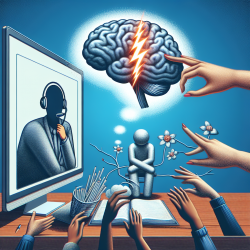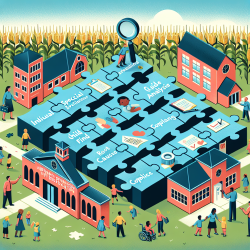Introduction
Workplace bullying is a pervasive issue that extends beyond individual interactions, reflecting broader societal inequalities. The research article "Asymmetric Intergroup Bullying: The Enactment and Maintenance of Societal Inequality at Work" provides insights into how bullying can manifest as a mechanism of societal inequality, with significant implications for practitioners in education and therapy.
Understanding Asymmetric Intergroup Bullying
The study explores the concept of asymmetric intergroup bullying, where members of low-status groups are disproportionately targeted. This phenomenon is not merely a reflection of personal animosities but is rooted in broader sociopolitical dynamics. The research, conducted through interviews with public and private sector workers in Turkey, reveals how bullying serves organizational and sociopolitical goals, such as eliminating unwanted personnel without severance pay or reinforcing political dominance.
Implications for Practitioners
Practitioners, particularly those in educational and therapeutic settings, can draw valuable lessons from this research:
- Recognize the Broader Context: Bullying should be understood within the larger societal framework. Practitioners need to be aware of how societal inequalities can influence interpersonal dynamics within organizations.
- Develop Inclusive Policies: Schools and therapy providers should implement policies that address not only individual behaviors but also the systemic factors that contribute to bullying. This includes fostering an inclusive environment that respects diverse backgrounds and identities.
- Enhance Training Programs: Training for educators and therapists should include modules on recognizing and addressing asymmetric intergroup bullying. Understanding the sociopolitical underpinnings can help in devising more effective interventions.
- Advocate for Systemic Change: Beyond individual interventions, practitioners should advocate for broader systemic changes that address the root causes of inequality and bullying. This includes supporting policies that promote equity and inclusion at all levels of society.
Encouraging Further Research
While the study provides a comprehensive view of bullying as a reflection of societal inequality, there is a need for further research to explore these dynamics in different cultural and organizational contexts. Practitioners are encouraged to engage with ongoing research and contribute to the development of strategies that mitigate the impact of such bullying.
Conclusion
Understanding asymmetric intergroup bullying is crucial for practitioners aiming to create supportive and equitable environments. By addressing the systemic roots of bullying, educators and therapists can play a pivotal role in fostering positive change. For those interested in delving deeper into the research, the original paper offers a wealth of insights and can be accessed here: Asymmetric intergroup bullying: The enactment and maintenance of societal inequality at work.










